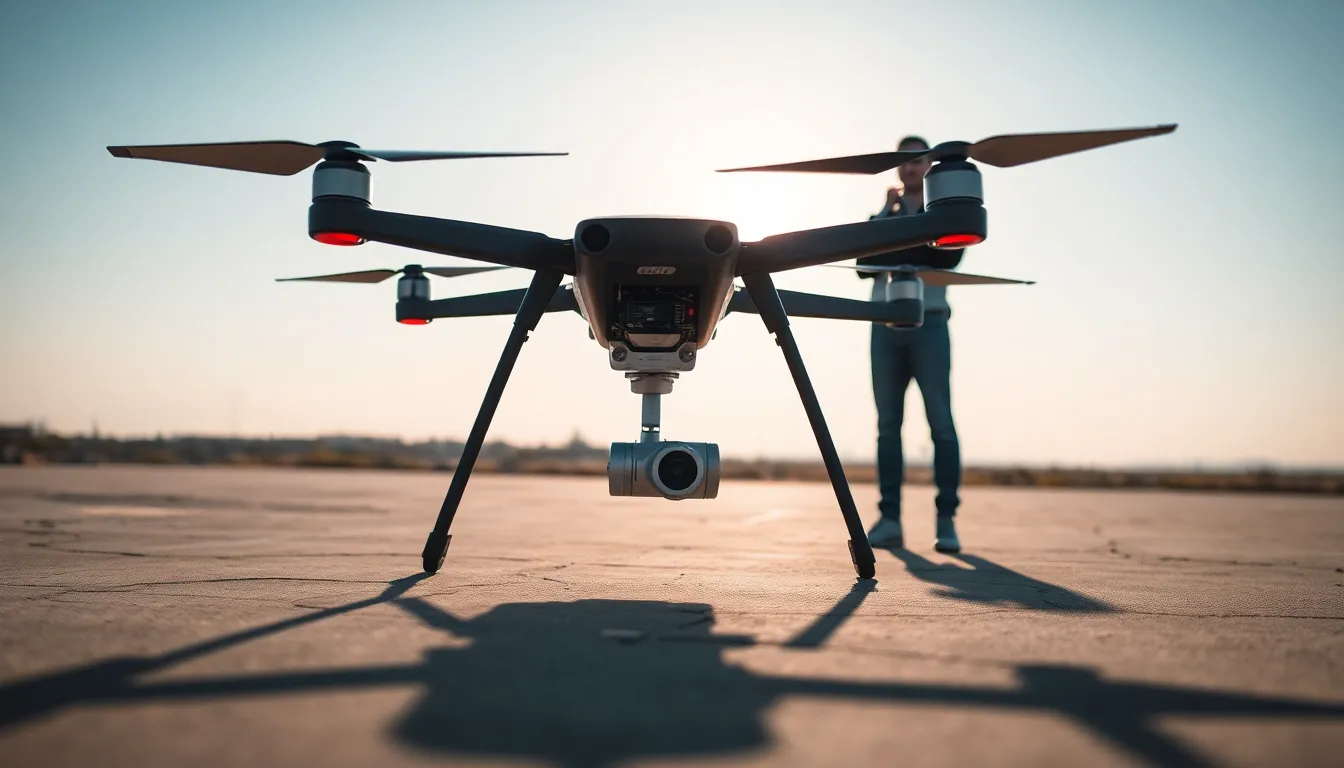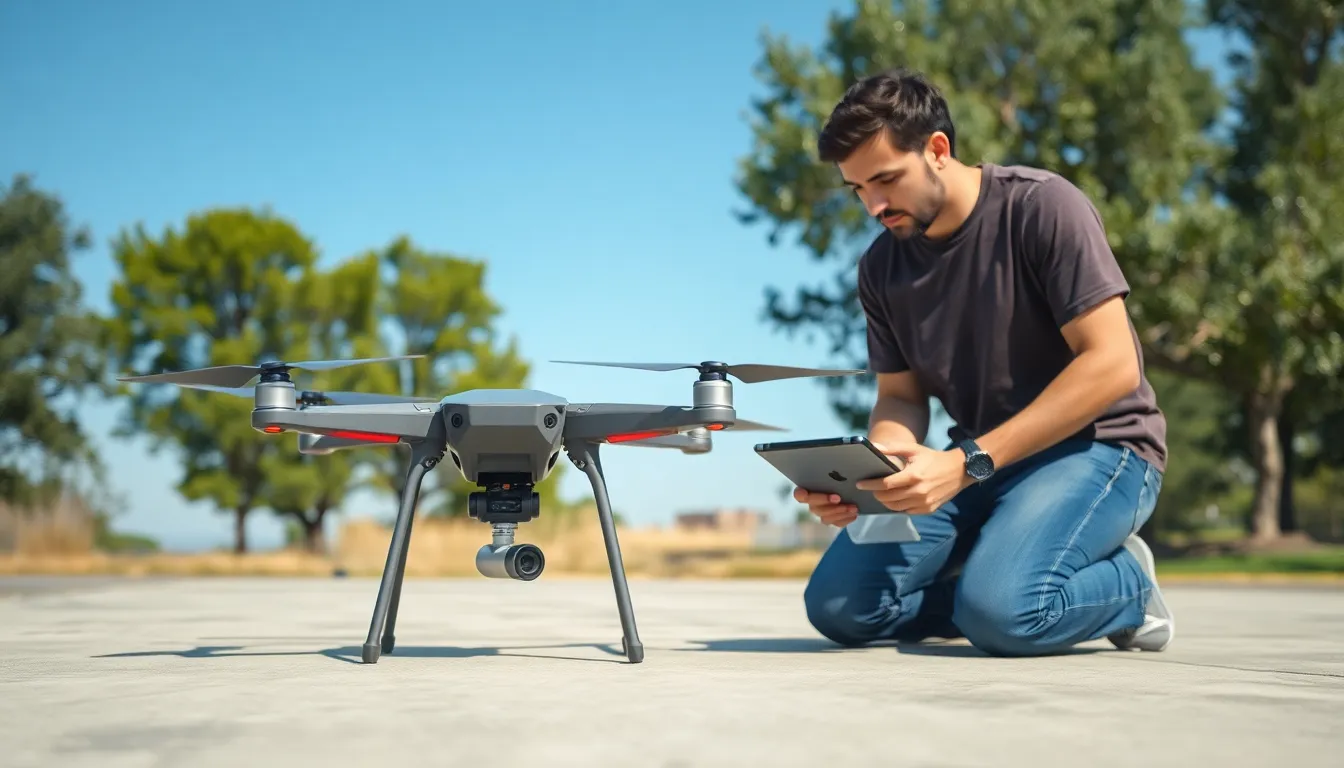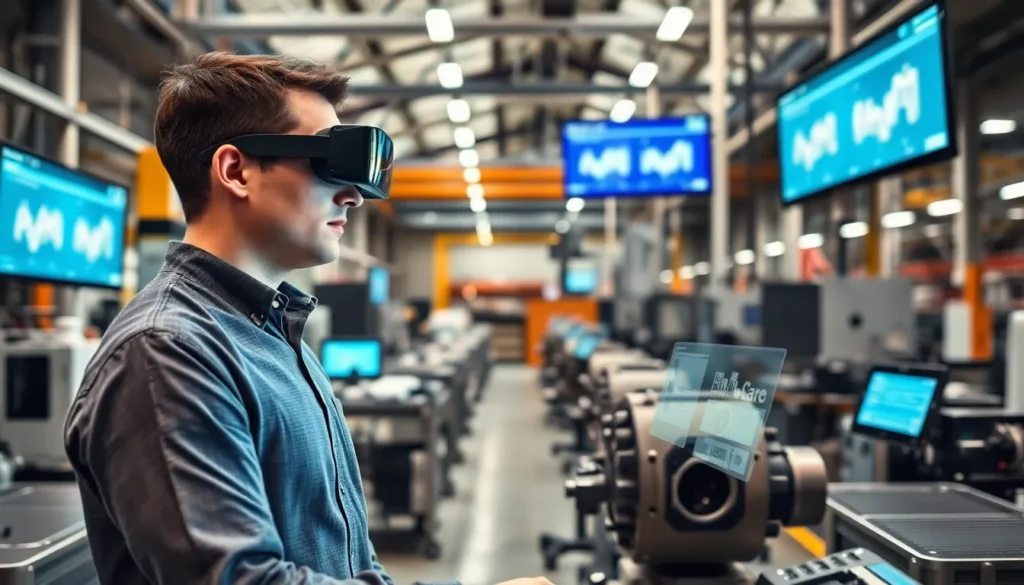In the high-flying world of drones, precision is key, and nothing screams “I’m lost!” like a miscalibrated compass. Imagine your drone taking off like a majestic eagle only to veer off course and crash into a tree. Not the highlight of anyone’s day, right? That’s where drone compass calibration swoops in to save the day.
Table of Contents
ToggleUnderstanding Drone Compass Calibration
Compass calibration is vital for accurate drone navigation. A precise calibration ensures the drone performs optimally in various environments.
Importance of Compass Calibration
Calibration affects the drone’s ability to hold its intended flight path. Without proper calibration, the device may experience erratic behavior. Inaccurate compass readings lead to misdirection, resulting in potential crashes. The calibration process is simple yet essential, involving a few basic steps. Operators should perform calibration regularly, especially before flying in new locations. Regular calibration prevents costly mistakes and enhances safety protocols.
How it Affects Flight Performance
Flight performance hinges significantly on accurate compass readings. A calibrated compass ensures the drone responds correctly to pilot commands. Incorrect values lead to drift and unintended movements. Consistent calibration improves stability and responsiveness during maneuvers. Operators may notice enhanced precision in turns and altitude adjustments. Additionally, a well-calibrated compass assists in maintaining controlled flight paths, crucial for capturing quality aerial footage. In turn, this reliability fosters greater confidence when operating drones in complex environments.
Steps for Drone Compass Calibration

Effective compass calibration is essential for ensuring accurate navigation and optimal drone performance. Following a systematic approach simplifies the calibration process.
Pre-Calibration Preparations
Preparation sets the stage for successful calibration. Begin by ensuring the drone is on a flat, level surface away from metallic objects. Next, check for any firmware updates, as outdated software can affect compass performance. Power up the drone and connect it to the controller, readying it for the calibration process. A thorough inspection of the surrounding environment helps minimize interference from nearby electronic devices.
Step-by-Step Calibration Process
Calibration involves several straightforward steps. First, access the calibration option within the drone’s software settings. Second, initiate the compass calibration process. Rotate the drone 360 degrees horizontally, ensuring consistent motion for accurate readings. After completing the horizontal rotation, position the drone vertically and rotate it 360 degrees again. Observe any on-screen prompts during the process. Finalize the calibration by confirming successful completion within the software. Always test the compass functionality before future flights to ensure reliability.
Common Issues in Compass Calibration
Compass calibration issues can significantly affect drone performance. Understanding common problems aids operators in maintaining efficient navigation.
Identifying Calibration Errors
Calibration errors often manifest as erratic flight patterns or unexpected course changes. Inconsistent drone responses to pilot commands directly indicate compass inaccuracies. Operators might notice the drone drifting or failing to hover steadily. Disturbances from nearby metallic objects can also lead to misleading compass readings. Environmental factors like magnetic interference from power lines or large structures may further complicate precise calibration. Regularly checking the calibration status ensures accurate performance before flights.
Troubleshooting Tips
Addressing calibration issues requires systematic troubleshooting. First, operators should relocate the drone to a more suitable area, far from metallic obstructions. Before starting the calibration process, ensuring that the firmware is up to date is essential for optimal performance. Next, rechecking the compass functionality through the drone’s software helps confirm calibration success. If problems persist, repeating the calibration process multiple times can yield better results. Sharing experiences with other drone operators in forums may also provide valuable insights into unique challenges faced during calibration.
Tools and Software for Calibration
Proper tools and software enhance the calibration process, ensuring optimal drone performance. Utilizing the right resources makes a significant difference.
Recommended Calibration Tools
A variety of tools simplify compass calibration. Magnetic field deviation tools assist in determining local magnetic influences. Leveling pads ensure the drone sits flat, minimizing inaccuracies during calibration. A compass device checks external magnetic fields. These tools help identify potential interferences, allowing operators to address issues effectively. Standard wrenches aid in securing components tightly. Additionally, portable kits with calibration equipment can enhance portability and ease of use during onsite calibration.
Software Solutions for Accurate Calibration
Different software solutions streamline the calibration process. Firmware updates often include calibration enhancements, maintaining optimal performance. Mobile apps designed specifically for drones offer user-friendly interfaces for calibration tasks. These applications frequently guide users through each calibration step without confusion. Some advanced models feature built-in calibration wizards to assist operators. Software compatibility varies across drone types, so verifying that the chosen software matches the drone model is essential. Moreover, leveraging user forums for software tips can improve the calibration experience.
Maintaining a well-calibrated compass is essential for any drone operator aiming for safe and effective flights. Regular calibration not only enhances navigation accuracy but also significantly reduces the risk of costly crashes. By following the outlined steps and addressing common calibration issues, operators can ensure their drones perform optimally in various environments.
Investing time in proper calibration fosters confidence in flight operations, allowing for smoother maneuvers and improved aerial footage. As technology continues to evolve, staying informed about tools and software that aid in the calibration process will further enhance the overall flying experience. Prioritizing compass calibration is a small but crucial step towards achieving flight excellence.





